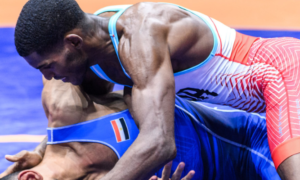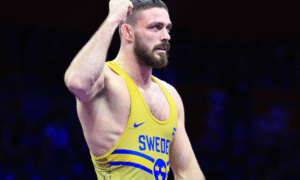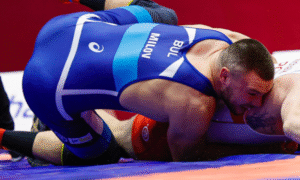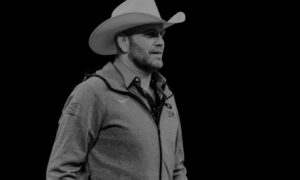The second Watchlist of 2019 covers what were two of the most compelling weight classes from a season ago, 63 and 67 kilograms. 63, one of four non-Olympic categories, made its debut into the curriculum last January and quickly amassed a population of deeply talented competitors — both in the US and worldwide. As for 67 kilos, it hardly requires a preamble. Consistently stacked and featuring several of the best athletes in the country, it is now a weight that is beginning to welcome in names who have paid their dues and are on the cusp of taking over the landscape.
As pointed out in the intro for the 55-60 Watchlist, what you will find below are not predictions. They are breadcrumbs to follow, and more than anything else, a mechanism to provide an education as to who these athletes are in advance of the two major domestic events this season, the US Open and the Final X Series.
Last year’s collection of Watchlists were broken down by teams/clubs. For 2019 we have returned to the standard weight class format in effort to better streamline the material’s absorption.
2019 USA Greco-Roman Watchlist: 63-67 kg
63 kg
This is one weight class where there has been a considerable amount of distance between the lead dog (Jesse Thielke, world no. 14) and the rest of the pack. An Olympian in 2016 as well as a (now) two-time World Team member and a Junior World medalist before any of that, Thielke is just starting to enter his athletic prime. And like many of his 63-kilo contemporaries, he assimilated exceptionally well in this weight. Sammy Jones (NYAC/OTS) enjoyed a surge of his own in ’18, but so did Xavier Johnson (Marines) and Travis Rice (IRTC). They’ll all trade paint with each other eventually, and recent history suggests that is something you should be excited about. The only semi-issue? In all probability, each of the athletes discussed below will be in a different weight next year.
Jesse Thielke (NYAC/LOG)
You can’t say that the 2017-18 season was Thielke’s strongest yet — but it might have been his most important. He showed that the move from the Olympic Training Center to Legends of Gold in South Dakota was the right one at the right time — and that he was still Thielke — still dipping levels, still capable of chaining attacks, still knows how to turn it on. Thor Masters was a bright spot, that’s where he pressed Mihai Mihut (ROU, world no. 7) to the near-breaking point in the final. And the manner in which he got past domestic rival Ryan Mango (Army/WCAP) to make his second Senior World Team was also tough to forget. When he’s on, there might not be a better overall wrestler in the country, Thielke’s ability and IQ are that substantial. Like everyone else in this weight, 2020 looms large, making whatever you see out of him this season sufficiently intriguing — and ultimately a mere appetizer.
Sammy Jones (NYAC/OTS)
Asking Jones to button it up a little bit more in matches is like asking a mechanic to use a screwdriver to twist lug nuts off of a tire. It just doesn’t work. How Jones goes about his business isn’t likely to change, mostly because it’s as if he sees a more conservative approach akin to robbing both himself and the fans out of what is often a lot of action. Thing is, you can’t help but wonder what would happen if Jones dialed it back on occasion, maybe walled off in the tie-ups instead of flying wide open — especially in high-leverage situations. A University World bronze medalist in ’14, Jones’ ascension to the US Open final last year represented his highest Senior domestic placing. He just turned 25, there’s still time for him to fully click. Does that happen in 2019? It certainly could, but only if he saves some of those bazooka rounds for when he really needs them.
Xavier Johnson (Marines)
Four international medals, a pair of thrilling victories over Jones, and a place on the National Team made Johnson’s 2018 campaign very difficult to miss. He also stunned multi-time World Teamer Ildar Hafizov (60 kg, Army/WCAP) early last year, as well. Coaches who have become familiar with Johnson’s work can’t help but come away impressed — though they will also point to how he still needs to develop in a variety of areas. Let’s say that’s the case, which it probably is; even if it is, then Johnson boasts maybe the most upside out of every Senior prospect who has come down the pike in recent memory. Although he wasn’t exactly a newbie last season, 2017-18 provided his first major sample size. Johnson’s biggest challenge this go-round will be contending with a bevy of athletes who have gotten a lot of looks at how he operates, thus he won’t be catching too many by surprise. Maybe he doesn’t need to.
Travis Rice (IRTC)
The deal with Rice is that last season was his best yet. 63 kilograms fit him like a glove. He often owned an advantage in the speed department; and he was able to clear ties and get to the body with newfound confidence that his attacks wouldn’t be suffocated by larger athletes. His biggest wins — a US Open quarterfinal triumph over Hayden Tuma (Army/WCAP) and his wild, white-knuckled two-match sweep of Johnson in the U23 finals — proved that he knows how to dig really deep when the odds are stacked against him. Most everything Rice experienced a year ago seemed like a watershed moment. But that’s what makes his presence in ’19 so vital. When an athlete is coming off of an impressive, near-milestone-achieving season, you want to see if this is now how things are. There is an expectation of consistency surrounding Rice these days. If he can live up to it, the sky’s the proverbial limit.
LilShawn Greedy (Army/WCAP)
A lot of tools — but those tools require refinement. In order for that to happen, Greedy has to stay healthy and receive credible opportunities of which he can take full advantage. Because, what you’re witnessing in his matches is legitimate talent that needs to be cultivated. You’re also catching lopsided losses to top guys due to a lack of big-time Senior experience. Of course, a generous dose of foreign experience wouldn’t hurt, either. Greedy demonstrates nifty improvisational skills that can bail him out of trouble — but also get him into trouble. Position is the main area that can use some shoring up; if he locks that down, good things will happen. This is still a promising wrestler who simply needs to iron out a few glaring vulnerabilities so the next step stops appearing so far away.
Colton Rasche (Marines)
At 63 kilos, the Marines have Johnson, Rasche, and Taylor Zippe, who is also beginning to round into form. But Rasche has been out there more, and as he grows increasingly comfortable with what his skill-set has to offer, you’re hoping that his confidence in engagements starts to follow. It’s not that Rasche doesn’t “bring it” — but it occasionally seems like something is holding him back, the kind of pauses which suggest an athlete is trying to figure something out. Rasche — once a talented high school wrestler in Illinois before competing for the Naval Academy and becoming an NCAA D1 qualifier — moves well, reacts quickly, and displays intimate knowledge of Greco fundamentals. But he also gets caught in-between; therefore, he gives up position and/or scores that are often avoidable. He’s with the right program, however. Rasche has logged a lot of time overseas with the Marines. Eventually, he could piece the puzzle together.
67 kg
Ellis Coleman (Army/WCAP, world no. 11) has had 67 on lock the past two seasons with Alex Sancho (Army/WCAP) playing the role of primary antagonist. If Sancho is sticking around these parts, then behind he and Coleman is a crew of hungry combatants who have all had their moments recently, especially Hayden Tuma (Army/WCAP), who returned to 67 following a two-year flirtation with the lighter weight classes and stamped down a National Team spot. But again, don’t necessarily get hung up on the top three. Sooner or later, someone else from somewhere else is going to emerge and press the standard-bearers — something that 67 needs in the worst way for its long-term health.
Ellis Coleman (Army/WCAP)
He’s actually getting better with age. Coleman, who turned 27 in August, blitzed the 67-kilo bracket at the US Open, and after dropping Match 1 of the Trial finals series to Alex Sancho (Army/WCAP), he flipped the script completely and swept the back-end pair. After getting past Edgaras Venckaitis (LTU) in the first round of the Worlds, Coleman outwrestled the sport’s best athlete, Artem Surkov (RUS, world no. 1), through most of their bout before succumbing to the second-period passive sequence. A lot of confident kinesiology this year with Coleman, especially domestically. No hesitation, no pummeling for pummeling’s sake. He was on a mission offensively and it showed. Although he hasn’t declared so publicly, you get the feeling that 2020 might be the end. We’ll see. With how fantastic Coleman looked at times last season, it could be that even after all these years, he’s just getting started.
Alex Sancho (Army/WCAP)
Coleman’s main domestic rival will soon become his teammate, for as soon as Sancho is back from basic training he is set to join the World Class Athletes Program. That ought to be interesting. Sancho had an up-and-down 2017-18. He struggled at 67 in Cuba’s Granma Cup, looked great at 72 in New York, had a weird match with Patrick Smith (72 kg, Minnesota Storm) in the Open, and then won the Trials’ mini tournament — and took Match 1 from Coleman, as mentioned above. That was that, of course, and Sancho soon found himself staring at his fourth-straight Senior Trials final defeat. He won’t be around until late-March. How much time will he require to get up to speed in advance of the Open? Also, will he set sail at 67 upon his return, second-day scratch weight and all? The only thing anyone knows for sure is that this terrific competitor is still waiting for his first major domestic breakthrough, and enters action in ’19 as a definitive wildcard.
Hayden Tuma (Army/WCAP)
How special is Tuma? Let’s see, and we’ll toss out the Junior World Teams and focus just on his recent Senior exploits: he originally came on at 66 kilos and began to assert himself there; in 2016, he dropped to 59, won the Nationals, and made the ’17 Trial finals opposite teammate Ildar Hafizov; returned after a long layoff for the Bill Farrell Memorial in March at 63 kilos — and absolutely dominated; floundered at 63 in the Open because the cut was terrible; and then checked in for the ’18 Trials at 67 kilos and earned his second-straight National Team spot. Plenty of moving around for Tuma, hopefully he settles into this weight and stays put for a minute. He is a dynamic force when healthy and on his game. Without venturing into absurd hyperbole, Tuma might even possess the most dynamic potential in the nation. In order to reach it, sticking around in this weight class would be a good idea.
Jessy Williams (NYAC/FLWC)
Deserving of a much closer look than he typically receives from the mainstream lot. Williams, who originally began his full-time career at Northern but is now training up in Ithaca, carved out a place as one of the better 66 athletes in the nation a few years ago. He didn’t yet have the edge to really challenge the higher profile guys in front, though you could see the foundation was robust enough to where that was starting to change. Through much of the spring last year, Williams trained in Sweden and worked with a litany of quality training partners. He came back, made the US Open final for the first time, and naturally, his audience grew. Folks began paying proper attention. Tulsa didn’t yield the results he was hoping for, but it is tough to ignore the strides made both last season and overall. He’s dangerous — fundamentally-sound, has a great lift, and looks strong but is stronger than he looks.
Jamel Johnson (Marines)
Coleman, Sancho, Tuma… Those are your current National Team members. In virtually every area pertaining to actual Greco-Roman wrestling, Jamel Johnson doesn’t take a backseat to any of them. He’s got the experience — Johnson has been competitive on the top level for over half a decade — and his is a style that neatly blends classical Greco elements with customized, innovative transitions most US athletes cannot duplicate. A University World bronze medal in 2012 was seen as a portend of things to come, but a logjam at the top of the ladder along with other factors stymied Johnson’s ascension in the proceeding seasons. Two years ago, Johnson left the Army to reunite with Marine head coach Jason Loukides, and he re-entered competition for 2017-18 with new purpose. Basically, the only tournaments he hasn’t medaled in recently have all been domestic events. You see this guy in an overseas bracket, you anticipate hardware. That’s fantastic and everything, but he’s much more interested in winning the one that matters in his own country. That may finally happen in ’19.
Austin Morrow (NYAC/OTS)
If you were to refer to Morrow as “the most inspired and hardest-working wrestler in the United States”, chances are there would be all sorts of caught feelings and disagreement since everyone wants to believe it is they who are the most diligent when it comes to preparation. Well, consider this: Morrow knew nothing of Greco when he first started some six years ago, took an allotment of beatings, willed himself to improve as fast as he could, and then when he was just beginning to establish himself as a consistent contender, he wrecked his shoulder. And then he wrecked the other one. It took almost two years for Morrow to return to full capacity and his drive to do so never wavered. Not even once. Last season ushered in Morrow at close to 100% and he made the semis at both the US Open and World Team Trials. He’s not far away. When you step back and observe all that he has been through, the fact he’s still chugging along makes him one very scary individual.
CLICK HERE TO DONATE TO THE USA GRECO-ROMAN PROGRAM
SUBSCRIBE TO THE FIVE POINT MOVE PODCAST
iTunes | Stitcher | Spreaker | Google Play Music | RSS


















